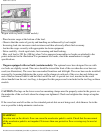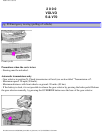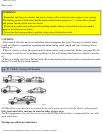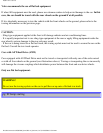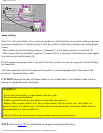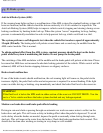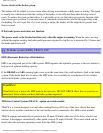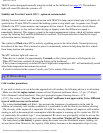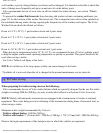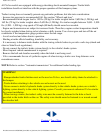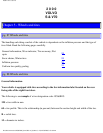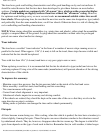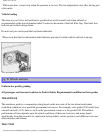
2000 Volvo S & V70
TRACS can be disengaged manually using the switch on the dashboard (see page 27). The indicator
light will come ON when the system is off.
Stability and Traction Control (STC) - option on certain models
Stability Traction Control works in conjunction with TRACS to help control wheel spin at all speeds. At
speeds below 25 mph, TRACS controls the braking system to stop wheel spin. At speeds over 25 mph
(40km/h), the STC system monitors and compares all four wheels. If one of the drive (front) wheels
shows any tendency to slip, such as when driving on slippery roads, the difference in speed is
immediately detected. This triggers a signal to the engine management system, which will reduce engine
torque (by reducing fuel) until the differential is corrected. This torque reduction is handled in stages,
and reaction time is extremely fast.
The symbol will flash when STC is actively regulating power to the drive wheels. Normal power may
be reduced at this time. This is normal as power is momentarily reduced to help keep the drive wheels
from losing traction and spinning.
The STC indicator light will come on:
· When the car is started, for approximately 2 seconds, as the system performs a self-diagnostic test.
· When STC has been switched off using the button on the dashboard.
· If the system is temporarily switched off due to high brake temperatures. STC will automatically restart
when brake temperature has returned to normal.
· If a fault is detected in the system. Consult your Volvo retailer if this occurs.
pg. 85 Winter driving
Cold weather precautions
If you wish to check your car before the approach of cold weather, the following advice is worth noting:
· Make sure that the engine coolant contains at least 50 percent antifreeze: that is, 3.7 qts. (3.5 liters)
Volvo Genuine Coolant/Antifreeze. This gives protection against freezing down to -31°F
(-35°C). See section "Coolant". The use of "recycled" antifreeze is not approved by Volvo. Different
types of antifreeze may not be mixed.
· Try to keep the fuel tank well filled - this prevents the formation of condensation in the tank. In
addition, in extremely cold weather conditions it is worthwhile to add fuel line de-icer before refueling.
· The viscosity of the engine oil is important. Oil with low viscosity (thinner oil) improves cold-weather
starting as well as decreasing fuel consumption while the engine is warming up. For winter use, 5W-30
oil, particularly the synthetic type *, is recommended. Be sure to use good quality oil but do not use this
cold-weather oil for hard driving or in warm weather. See section "Engine oil" for more information.
· The load placed on the battery is greater during the winter since the windshield wipers, lighting, etc.
are used more often. Moreover, the capacity of the battery decreases as the temperature drops. In very
file:///K|/ownersdocs/2000/2000_SV70/00sv70_04c.htm (7 of 9)12/30/2006 3:43:44 PM



